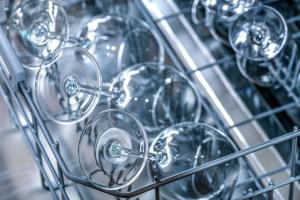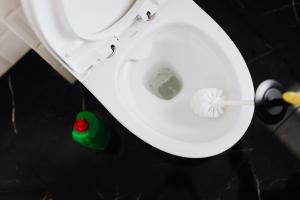
If you’re interested in installing a water filter, there are usually two main types to choose from: carbon filtration and reverse osmosis. Both options are highly effective at producing softer, safer water for homes and businesses.
Here, we’re going to focus on why you might want to use a reverse osmosis water filter, how they work, and whether it’s the right choice for your needs.
What is Reverse Osmosis Water Filtration?
To sum it up in a sentence, a reverse osmosis filter pushes water through a semi-permeable membrane that only allows water molecules through, removing bacteria and other minerals from the water.
Osmosis is a biological term that relates to the movement of water from a source with a high water molecule count, through a membrane, to a source with a lower water count. Plant roots use this technique to absorb water from the soil.
In our water filters, the reverse is happening – water is moved from a lower-concentration source (unfiltered water containing other minerals) to a higher-concentration source (filtered, purer water). Hence the term reverse osmosis.
How Does a Reverse Osmosis Water Filter Work?
Reverse osmosis water filters typically use multiple levels of filtration in one system.
A separate filter will first remove large particles from the water before it reaches the reverse osmosis section. Then, the water is forced through a semi-permeable membrane that removes almost all other particles.
Unlike carbon filtration, which relies on contaminants in water being attracted to the filter’s surface, reverse osmosis forces all the water through a membrane with extremely small holes so only pure water molecules can pass through to the tap (or additional filters).


What Does A Reverse Osmosis Water Filter Remove?
Our Premium K5 Pure Ultrawater filters remove 99.99% of viruses and 99.99999% of bacteria from water, thanks in part to reverse osmosis filtration through the Purefecta Guard filter.
Because reverse osmosis forces all the water through, this filter tends to remove more minerals than other methods.
While not all water will contain all these chemicals, these are some common substances that reverse osmosis filters will remove from your water.
- fluoride
- chlorine
- lead
- salt
- sodium
- copper
- calcium
- magnesium
- phosphorous
Note that this isn’t a complete list – reverse osmosis tends to remove almost all minerals and contaminants from water.
Are Reverse Osmosis Water Filters the Best Option?
If you’re looking for the purest possible water from your taps, the best option is usually a reverse osmosis water filter.
The other popular method of water filtration is carbon filtration. Here, activated carbon works like a magnet, attracting and catching contaminants in the water.
While reverse osmosis is more effective at catching smaller particles, Kinetico products use a combination of both techniques to deliver the purest water possible.
The only thing you might want to consider before getting a water filter is whether a full filter is right for your needs. If you’re only looking to soften your water to reduce the risk of limescale, then you may want to consider a water softener instead.


Buy a Reverse Osmosis Water Filter
Not only do our reverse osmosis water filters deliver high performance, but they’re also cost-efficient. Our water filters allow you to enjoy the quality of bottled water at a fraction of the price, straight from your taps at home.
At Kinetico, we’ve been designing water filters for over 50 years. Our expert engineers have revolutionised the world of water treatments through innovative and cost-effective products for both homes and businesses.
If you’re interested in a reverse osmosis water filter, check out our full range of water filters. If you’re a business, or just have any questions, feel free to contact our team!








